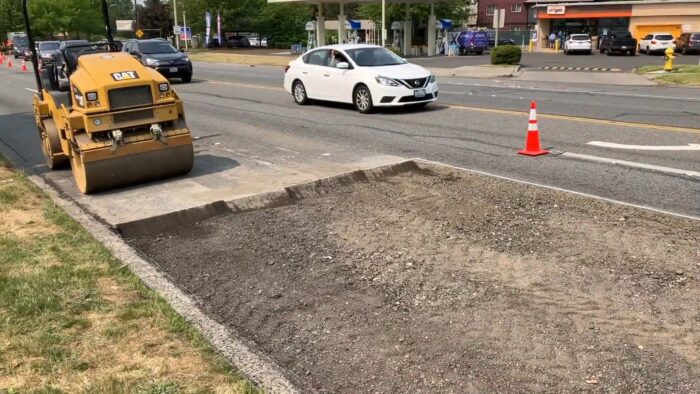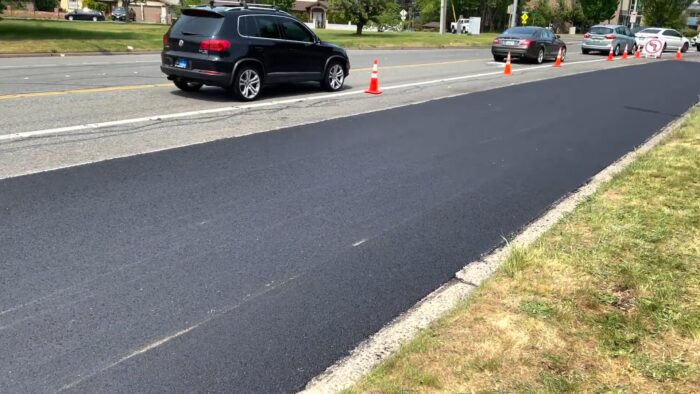Road repairs are vital to our communities. They provide a safe, pothole free ride, and nothing makes a downtown district more appealing than a fresh layer of asphalt. Unfortunately, the same road construction that revitalizes a local business district can also be detrimental, especially to small businesses.
In a report published by the MN DOT, researchers found that road repairs negatively affected small local businesses the most. They report, “Single-establishment firms experience negative sales impacts from construction when tracts are affected only by infrastructure replacement projects….Furthermore, negative sales and employment effects occur after construction is completed for single-establishment firms in urban areas and in tracts affected by longer bouts of construction. “
To put it simply, small local businesses experience negative effects during and after an infrastructure project. This creates a quandary for civic leaders. They want to encourage the growth of local businesses while also upgrading local roads and streets. This drives home the importance of long-lasting and cost-effective road repairs that don’t take weeks or even months to complete.
Communities use a variety of road repair methods to keep their streets maintained. These include pothole patches, asphalt mill and fill, and full depth reclamation. When comparing these methods, full-depth reclamation provides the most budget friendly, long-lasting, and least disruptive repairs.
Pothole Repairs
Communities frequently opt for temporary repairs because they are generally the least expensive, initially. They are also quicker to complete, providing less disruption to businesses and traffic. Pothole repairs can improve the road surface temporarily but are often not long term solutions.
According to the New York State LTAP center, many agencies fill potholes with cold patch asphalt. Then, they rely on local traffic to compact it. Unfortunately, these “throw and go” patches have an over 90% failure rate. The repair process might not disrupt traffic for long, but the pothole that reappears all too soon certainly will.
Mill and Fill Road Repairs
Mill and fill road repairs remove asphalt with an asphalt milling machine or cold planer and then replace it with new asphalt. Communities generally use this method to improve asphalt with alligator cracking and potholes.
Obviously, there is more traffic disruption with mill and fill than with pothole filling. However, a crew can complete a small area of mill and fill in one to two days. This limits negative economic impacts on businesses and lessens customer frustrations, at least on the first repair.
The problem with mill and fill is that most potholes, ruts and cracks are the result of road base failure. As its name indicates, surface milling only addresses the asphalt surface. A road patch may look and function better than pothole-ridden asphalt, but it’s only a short term road repair. It won’t take long before the potholes and alligator cracking appear again in the same location.
Full-Depth Reclamation

Full depth reclamation (FDR) is an alternative to both mill and fill and pothole patching. It uses road base stabilization to produce a result similar to full road reconstruction. The difference is the cost savings, project completion time, and the lack of traffic disruption on the construction project.
Full depth reclamation uses a road reclaimer / asphalt reclaimer to recycle asphalt into spec-comparable road base material. Portable asphalt recycling machines make FDR affordable for even small communities.
Road reclamation is simple. The reclaimer machine simply pulverizes the asphalt and mixes it with the road base. The recycled asphalt acts as aggregate material, providing additional road stabilization. Then, crews grade and compact the road and apply a new asphalt or chip seal surface.
Here are several benefits of pavement reclamation:
- Vehicles can drive over the reclaimed material. This keeps businesses open and accessible during the entire construction process.
- Pavement recycling has a positive environmental impact, reusing old asphalt as road base. This recycled material virtually eliminates the need to haul in new base material and haul out asphalt millings. Essentially, you are recycling your road, while saving time and money.
- The full-depth reclamation process involves substantially less time and money than a full road reconstruction. It also produces high quality results that can last just as long.
- FDR takes the same amount of time as a mill and fill project, and costs are comparable, but the results last much longer.
- Portable road reclaimers are also easy to transport and maneuver. This allows crews to easily complete a wide range of projects, from smaller repairs, to a city block, or even several miles of road. Portable road reclaimers are also great for alleys and utility trenching.

Conclusion
Full depth reclamation allows communities to quickly and affordably make road repairs that last. Because of the simple FDR process, these repairs are much less disruptive to local businesses and residents. They are also significantly more budget friendly than a full road reconstruction. Why repair only the top pavement layers when you can repair your entire road by addressing your road base problems?
Key Take-A-Ways:
- Impact of Road Repairs on Businesses – Road repairs are important, but they can hurt small businesses. This is especially true during and after construction.
- Challenges for Communities – Cities need to balance infrastructure improvements with keeping businesses accessible and customers engaged.
- Comparison of Road Repair Methods:
- Pothole Patching – Quick and inexpensive but temporary, with a high failure rate.
- Mill and Fill – Addresses surface issues but doesn’t fix underlying road base problems, leading to recurring issues.
- Full-Depth Reclamation (FDR) is a lasting solution. It stabilizes the road base and reduces business disruptions. It is also cost-effective.
- Benefits of Full-Depth Reclamation – Keeps businesses open, recycles old asphalt, reduces costs, and extends road lifespan.